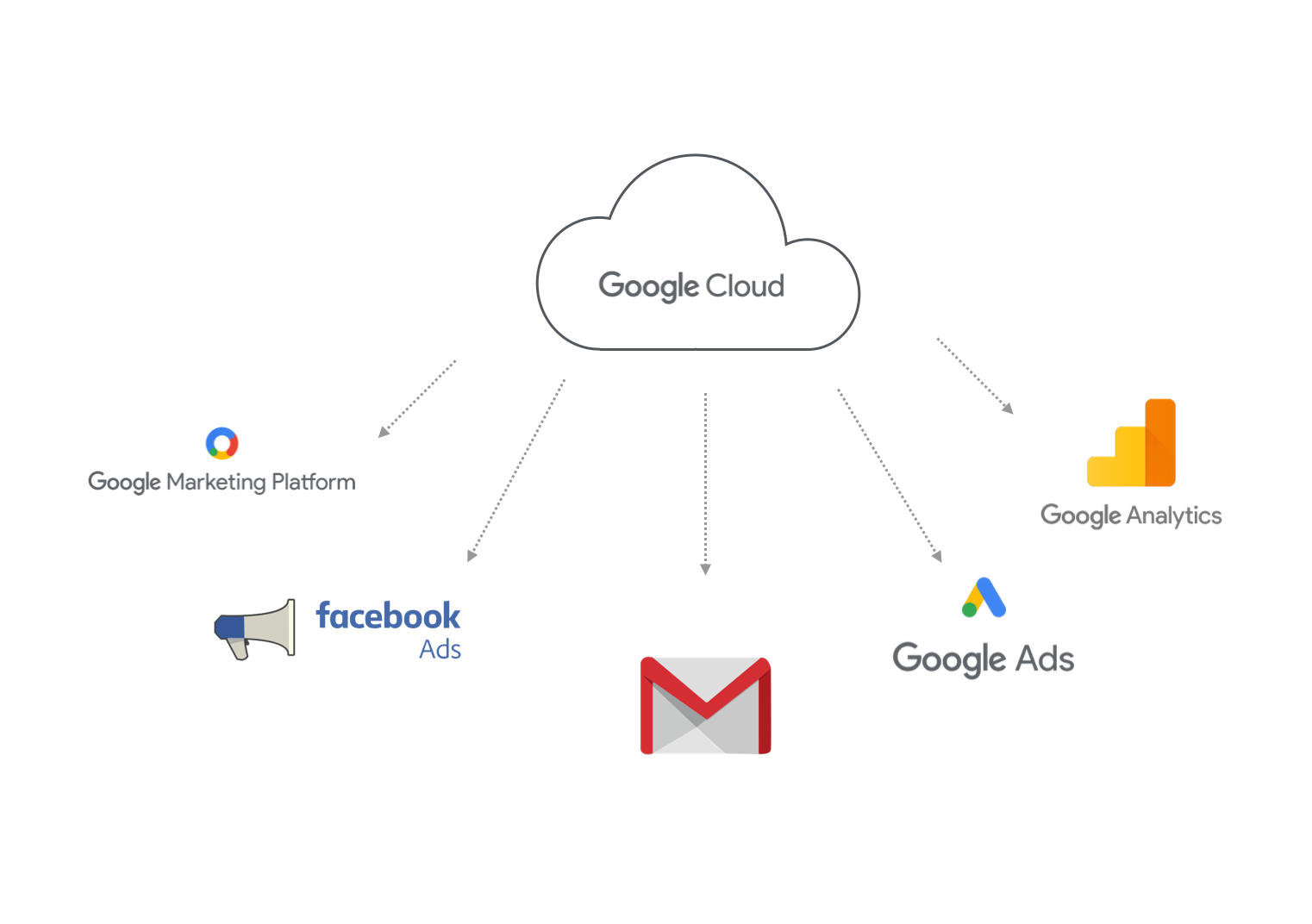The main objective of performance marketing is to maximise value with a positive Return On Investment (ROI). To do this, it’s crucial to measure the actual value your campaigns are delivering. For instance, you can measure revenue, margin, or lead quality, depending on your business goals. However, setting up accurate measurement for your campaigns can be quite complex. Because of this, fixed measures like selling price or pre-calculated lead values, are often measured by using conversion pixels. Luckily, there are better ways to do this: for instance, by using Conversion Uploads. This means setting up a process to automatically upload actual conversion data from your data warehouse to your digital marketing channels. By doing this, you’ll be able to evaluate and optimise your digital marketing performance in a more accurate way.
Conversion uploads – the basics
To set this solution up, it’s required to match clicks to conversions in your data warehouse. You can do this by using unique click and conversion identifiers. Each click on an ad generates a unique click identifier (also called a Click ID). When an ad click results in a conversion (e.g. sale, lead, or application), this click ID can be matched to a conversion ID with the corresponding value. After creating a dataset with these Click IDs and values, you can upload this data automatically to your digital marketing channels. Subsequently, you can activate this data by adjusting your bid strategies towards this improved value. By using conversion uploads, there are endless opportunities to activate value data within your marketing channels.

How to apply conversion uploads
The impact this solution can make relies heavily on your business goals, and the way you evaluate the performance of your campaigns. Let’s discuss some usage examples:
- Add product sales data to your value calculations: A lot of retailers measure revenue as value with their conversion pixel. However, using conversion uploads enables measuring transaction margin derived from your campaigns. In that way, you can optimise your campaigns towards a target Return on Ad Spend and include your margin instead of revenue. Your bidding algorithms will automatically increase bids and budgets for clicks that will generate more transaction margin. Besides measuring transaction margin, it’s also possible to correct transaction margin historically for returns, or for shipping- and warehouse costs.
- Add customer data to your value calculations: Besides product sales data, you can also add customer-level data to your conversion upload. For instance, think about adding extra value for new customers through your campaigns. When doing this, you’ll allocate more budget towards campaigns that result in attracting more new customers. Another option is to add customer lifetime value (CLV) to your value calculations. By using CLV, your campaigns will not only invest in the short term but also in the future value a customer will deliver.
- Upload offline conversions: When you can track a Click ID to an offline transaction, it will be possible to upload offline transactions resulting from clicks on your ads as well. There are various ways to do this. For example, this is possible when a customer can log in to their personal account online. When you can link the click ID to someone’s personal account, and that person completes a transaction offline (which can also be tracked to this personal account), we can upload offline transaction data to relevant digital marketing channels. This can, for instance, be extremely valuable to improve measurement for local campaigns or local inventory ads on Google Shopping. Subsequently, importing offline conversion values will lead to better bid management decisions.
- Lead or applicant status changes: When your main campaign goal is generating leads (or applicants) it’s important to measure value for specific lead types, to amend your bid management towards. Most companies use fixed values, based on the average value this lead will yield in the future. However, the actual value of most leads will deviate compared to this pre-calculated average. By using conversion uploads, it’s possible to adjust the value of leads, based on their actual lead quality. This value can be sent back to your digital marketing campaigns, so you’ll automatically optimise your campaigns towards high-quality leads.
These are just a few examples of how you can use conversion uploads as a solution to improve your value measurement, to ultimately improve your digital marketing strategy. Most importantly, you should always align your business goals with the value you’re uploading, and vice versa.
Setting up conversion uploads
When setting up conversion uploads, it’s crucial to use a proper data management platform and to set-up a real-time streaming process (or use a daily upload). When this process isn’t set up correctly, you might optimise your campaigns towards incorrect data. However, if that is in place, it is fairly easy to set up this solution.
- Prepare the data from your existing data warehouse for an import.
- Set-up a real-time streaming process or an automated daily upload (manually is also possible, but is time-consuming and error-prone).
- Validate your data.
- Include conversions and values in your conversion column.
- Adjust your bid strategies and dashboarding towards the improved values.
Available API’s for conversion uploads
Below is a list of the most used channels that you can use to upload custom conversion- and value data. The process and the way you can use your improved value is quite similar for all channels, only the interpretation may differ.
- Google Ads
- Search Ads 360
- Facebook Ads
- Display & Video 360
- Google Analytics
- Doubleclick Campaign Manager
To conclude, using the Conversion Uploads solution will have a huge impact on the way you’ll evaluate and optimise your digital marketing channels. It will improve the alignment between your campaign data and business goals, and will give your bidding algorithms better product- and customer data to optimize on. Would you like more information about Conversion Uploads, or do you want to set up a conversion upload process? Feel free to reach out!
More Insights?
View all InsightsQuestions?
Director Business & Innovation





